Head Circumference-for-age
Click on the sections below to access the respective growth charts:
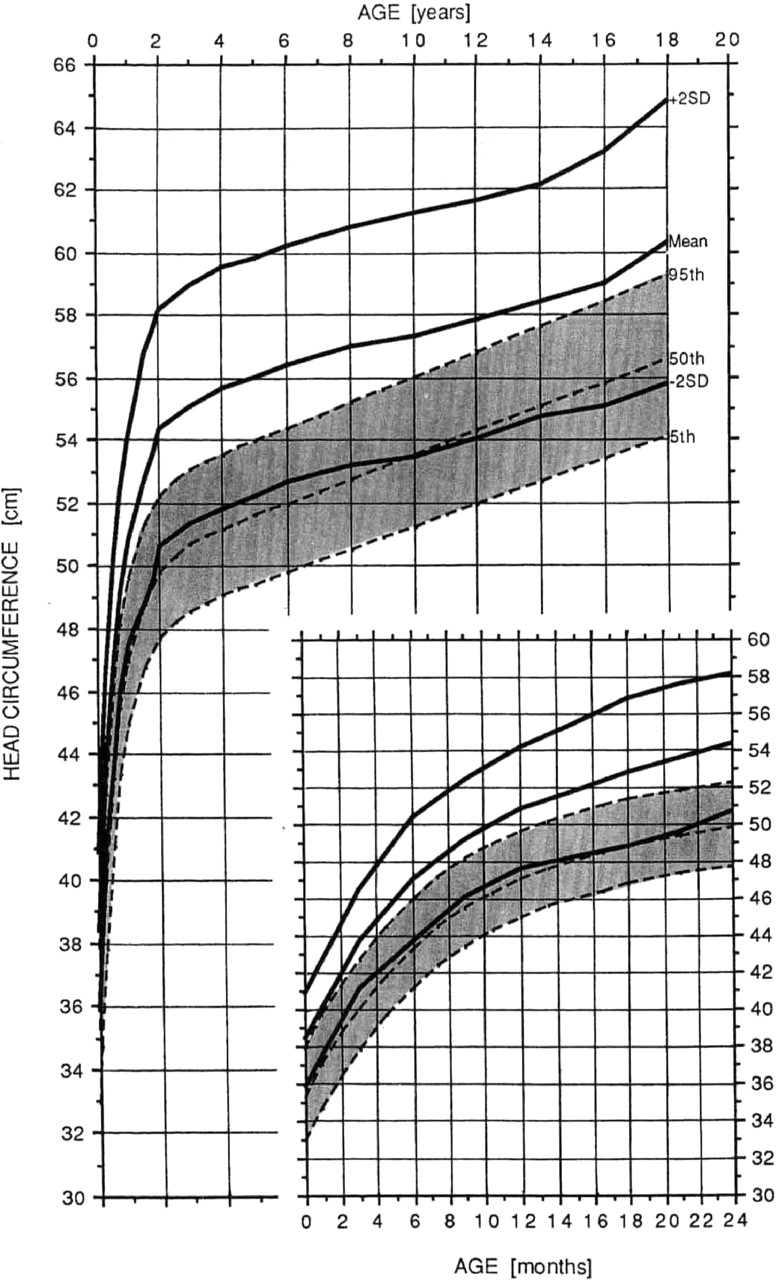
|
Head circumference for males with achondroplasia (mean ± 2.8 standard deviation) compared with average height standard curves (grayed areas) from 0 to 20 years of age with a higher resolution for 0 to 24 months.
Credits: Trotter, T.L. and J.G. Hall.
|
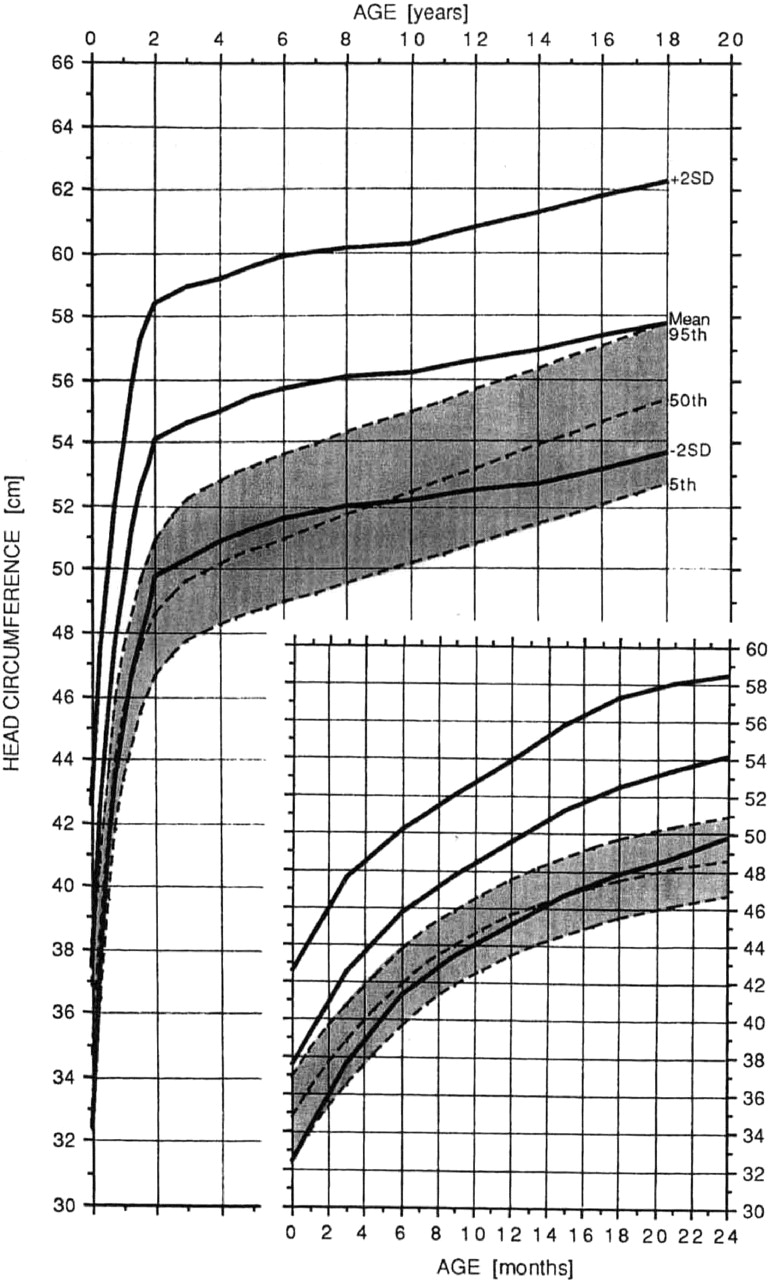
|
Head circumference for females with achondroplasia (mean ± 2.8 standard deviation) compared with normal standard curves (grayed areas) from 0 to 20 years of age with a higher resolution for 0 to 24 months.
Credits: Trotter, T.L. and J.G. Hall.
|
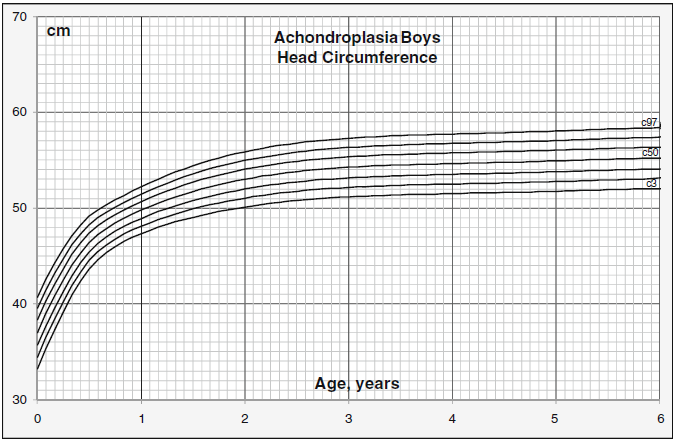
|
Head circumference-for-age for boys with achondroplasia from 0 to 6 years of age. Credits: del Pino et al. |

|
Head circumference-for-age for girls with achondroplasia from 0 to 6 years of age. Credits: del Pino et al. |
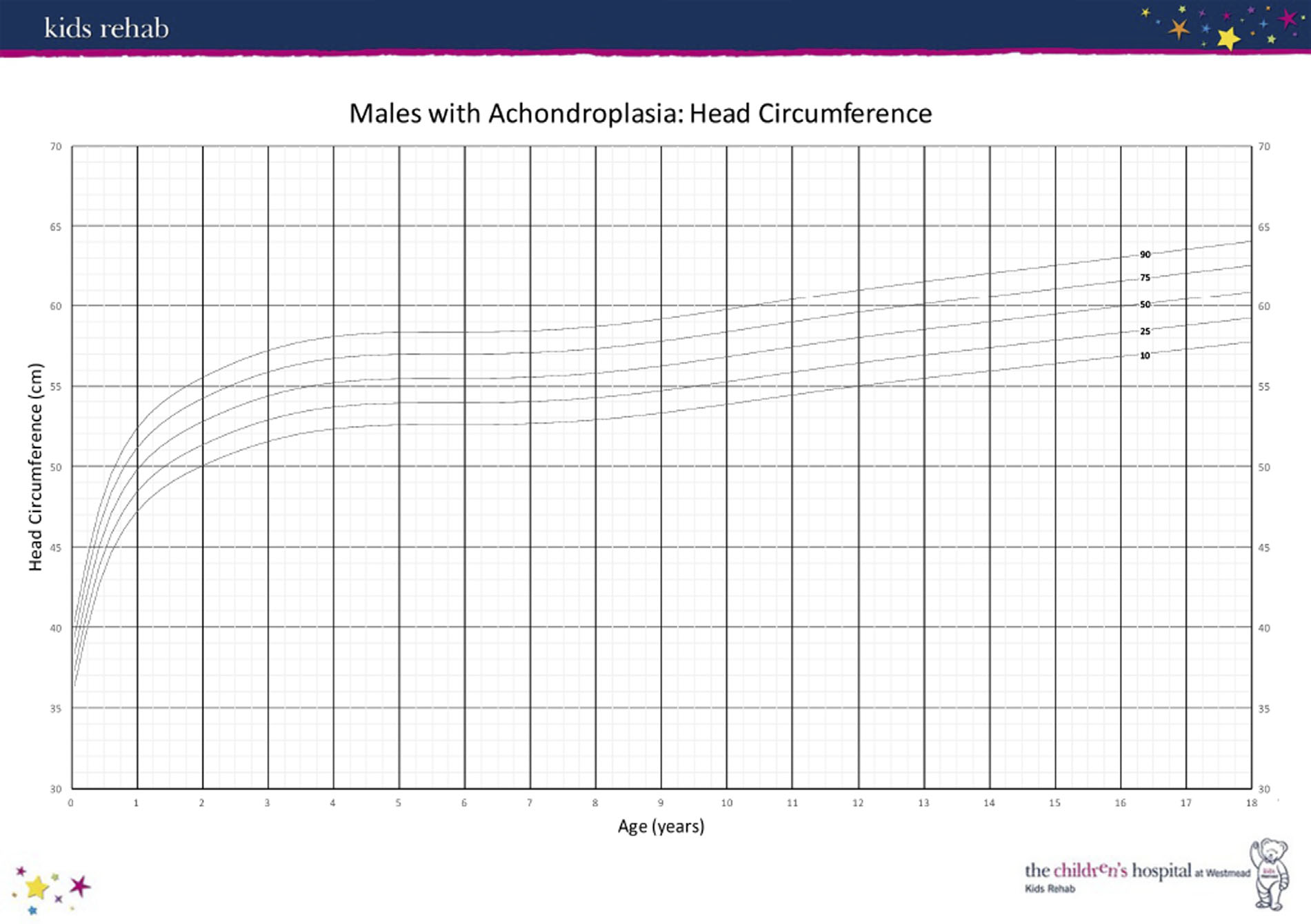
|
Head circumference-for-age for boys with achondroplasia in the Australian population from 0 - 18 years of age. Credits: Tofts et al. |
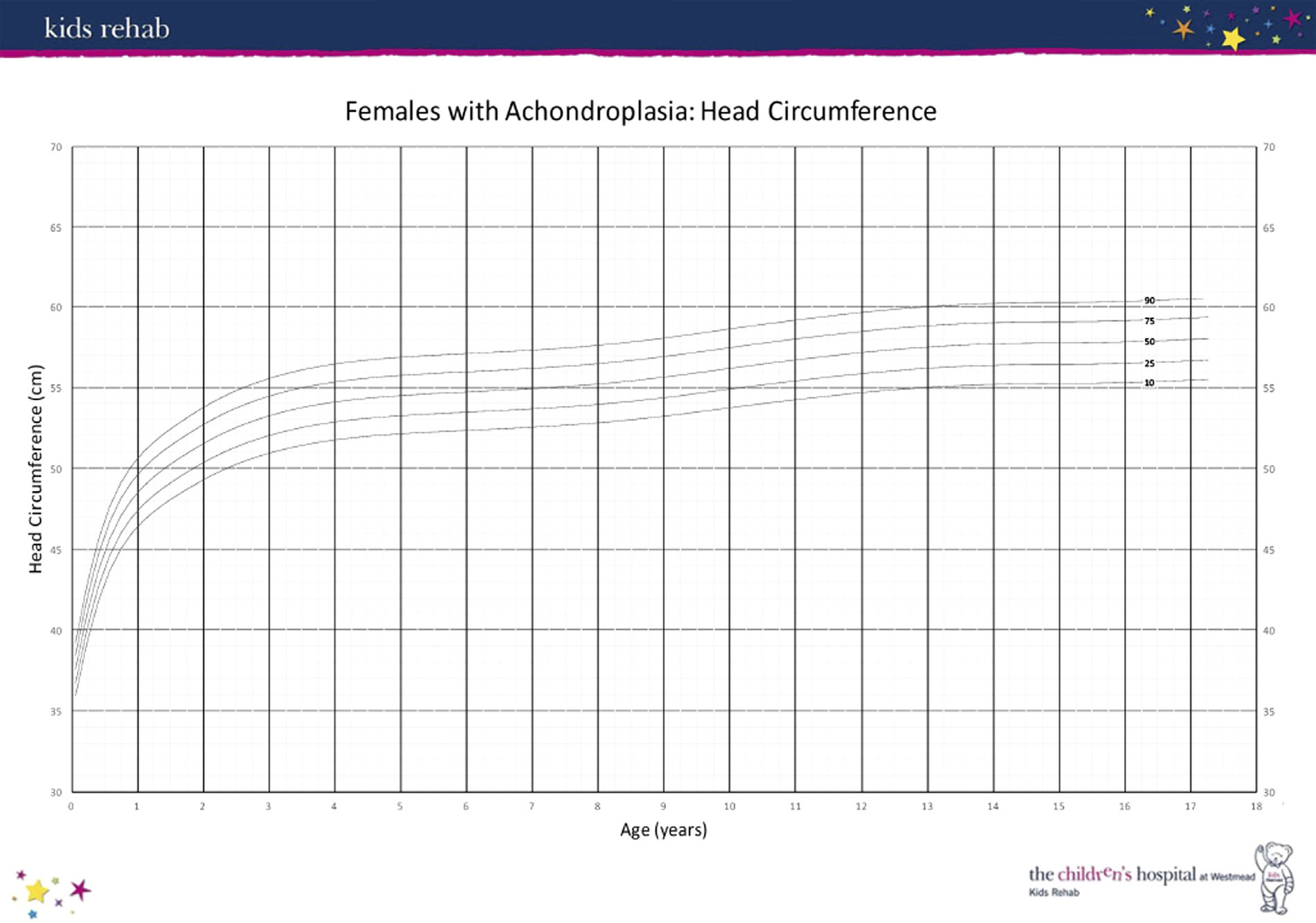
| Head circumference-for-age for girls with achondroplasia in the Australian population from 0 - 18 years of age. Credits: Tofts et al. |
Sources:
- Trotter, T.L. and J.G. Hall, Health Supervision for Children With Achondroplasia. Pediatrics, 2005. 116(3): p. 771-783. Available from: http://pediatrics.aappublications.org/content/pediatrics/116/3/771.full.pdf.
- del Pino, M., V. Fano, and H. Lejarraga, Growth references for height, weight, and head circumference for Argentine children with achondroplasia. Eur J Pediatr, 2011. 170(4): p. 453-9. Available from: https://www.ncbi.nlm.nih.gov/pubmed/20938683.
- Tofts, L., et al., Growth charts for Australian children with achondroplasia. Am J Med Genet A, 2017. 173(8): p. 2189-2200. Available from: http://www.ncbi.nlm.nih.gov/pubmed/28599087.


